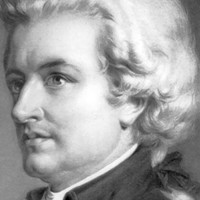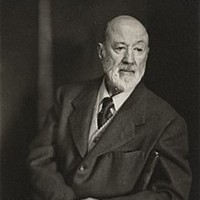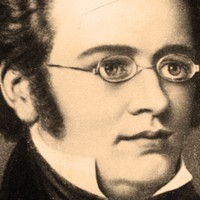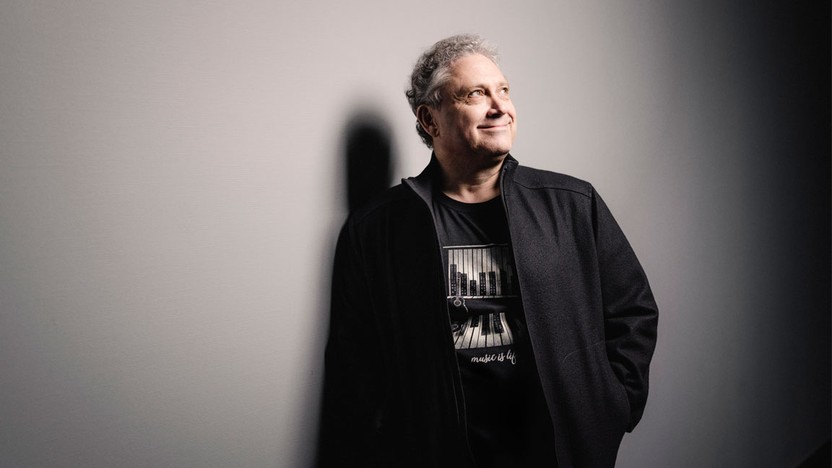Details

Wolfgang Amadeus Mozart
Overture to The Magic Flute (7 min)
In 1791, Wolfgang Amadeus Mozart joined with his friend and fellow Freemason Emanuel Schikaneder to create a singspiel, a popular form of theater that blended singing and spoken dialogue, akin to today’s Broadway musicals. This new comic opera, The Magic Flute, took shape during the spring and summer of 1791 and debuted on September 30, just months before Mozart’s untimely death.
Mozart had completed most of The Magic Flute by July, and then he paused it to dash off another opera, La clemenza di Tito, which would be his last. He finished the overture to The Magic Flute just in time, marking its date of completion as September 28, two days before the premiere.
The overture’s slow and solemn introduction draws out the sense of anticipation, until resolution comes in the surprising form of a breathless fugue that serves to whip the first main theme into a glorious frenzy. Ceremonial chords, mysterious detours and even a passing flute solo all hint at the supernatural mischief and power struggles of the forthcoming opera.
Aaron Grad ©2024
 Listen to Audio
Listen to Audio
Charles Ives
The Unanswered Question (6 min)
Charles Ives, who trained as a composer at Yale, resigned from his post as a church organist in 1902 and embraced the professional path of an insurance man. In the following decades he amassed a fortune, composed on evenings and weekends, and produced a singular body of music that went unheard by the public for most of his life.
Ives described The Unanswered Question, composed during his early years of musical independence, as a “cosmic drama.” Time slows down with the first sustained chord, a major triad spread wide throughout the strings. The harmonies unfold in a steady string chorale, a layer Ives characterized as “The Silences of the Druids — who Know, See and Hear Nothing.” Hovering in a different tempo and key, a lone trumpet poses “The Perennial Question of Existence,” a pensive anthem of mystery and wonder. A reproachful quartet offers “The Invisible Answer,” a dissonant and unstable retort that grows increasingly agitated with each response to the unwavering question. The trumpet intones the unknowable a final time, and the hushed string chorale fades away on the same mystical chord with which it began.
Aaron Grad ©2024

Franz Schubert
Symphony No. 9, The Great C Major (47 min)
The disconnect between Franz Schubert’s talent and his public recognition in his lifetime is hard to reconcile. This was a composer who produced hundreds of first-rate songs as a teenager — not to mention symphonies and chamber music — before even a note of his music had appeared in performance or in print. His songs gained a bit of traction in his lifetime, but his many attempts to break into opera were disastrous. As for his symphonies, not a single one reached the public before he died. As one publisher wrote to Schubert, in rejecting his manuscripts, ‘The public does not yet sufficiently and generally understand the peculiar, often ingenious, but perhaps now and then somewhat curious procedures of your mind’s creations.”
Schubert’s first six symphonies, composed between the ages of 16 and 21, are beautiful and original but hardly controversial, with their strong resemblances to later works by Franz Joseph Haydn and early works by Ludwig van Beethoven. Schubert took a bolder approach with the symphony he began in 1822, but he abandoned it after two movements, leaving what we now know as the “Unfinished” Symphony No. 8. Perhaps coincidentally and perhaps not, he set down that symphony around the same time that he suffered through the first phase of the syphilis infection that claimed his life six years later.
A letter from 1824 attests to Schubert’s continuing ambition to compose a “grand symphony,” a desire that could only have been stoked further when he attended the premiere that year of Beethoven’s epic Symphony No. 9. The next year, while vacationing on an Austrian lake and enjoying his best health in years, Schubert began his massive symphony in C-major. He revised it in 1826 and sent the score to Vienna’s Society of the Friends of Music, but they declined to perform it. For some reason Schubert later wrote a date of 1828 on the manuscript — perhaps to make it look fresher as he tried again to publicize it — but he made no headway with the symphony before his death that November at the age of 31.
The symphony’s fate finally turned in 1837, when Robert Schumann, an admirer and champion of Schubert, visited the late composer’s brother in Vienna. Among the stacks of scores — music essentially deemed worthless by publishers — Schumann found several symphonies, including the 130-page manuscript of the C-major symphony. Schumann forwarded the score to his friend Felix Mendelssohn in Leipzig, who finally conducted the first performance (albeit one with numerous cuts) in 1839.
Schumann was not exaggerating when he praised the symphony’s “heavenly length,” which can stretch to nearly an hour depending on tempos and whether sections are repeated as indicated. Somewhat like Beethoven’s Seventh Symphony, Schubert’s first movement places a substantial and not-so-slow introduction before the main body of the movement, with the two sections spliced neatly together through the shared motive of triplet accompaniment figures.
The second movement likewise makes a point of moving forward more purposely than most symphonic slow movements, with the tempo marked Andante con moto, or “At a walking pace, with motion.” (Again Beethoven’s Seventh provided a model, with its nimble Allegretto). Schubert’s symphonic construct builds toward militaristic intensity, but his knack for intimate songwriting makes its presence felt too, with the oboe taking the first turn as a surrogate singer.
Schubert’s Scherzo, as huge as the preceding movements, follows the boisterous and hearty template Beethoven developed in his symphonies as an answer to Haydn’s more polite minuets. The scale of this movement matches the supersized scherzo from Beethoven’s Ninth Symphony, but Schubert is much more effusive with his melodies, supporting them with freewheeling shifts between major and minor harmonies along the way.
In some of Schubert’s most famous songs, he generated unrelenting momentum with fleet-fingered piano accompaniments. For this symphonic finale, the violins often fill the same function, churning through streams of rapid triplets in smooth slurs or articulated bursts.
Aaron Grad ©2024
About This Program
SPCO Artistic Partner Richard Egarr returns to escort us on a musical journey that contrasts darkness and light. The overture to Wolfgang Amadeus Mozart’s beloved opera, The Magic Flute, calls upon the power of truth, love and beauty to conquer the darkness while The Unanswered Question, Charles Ives’ riddle-like work, features a contemplative trumpet solo asking the “eternal question.” The Great Major C, Franz Schubert’s monumental symphony begins reverently before being enriched with many moments of ecstatic joy. Fans of brass will love this fanfare-filled program!
Our Express Concerts are 60-75 minutes of music without intermission. Learn more at thespco.org/express.

